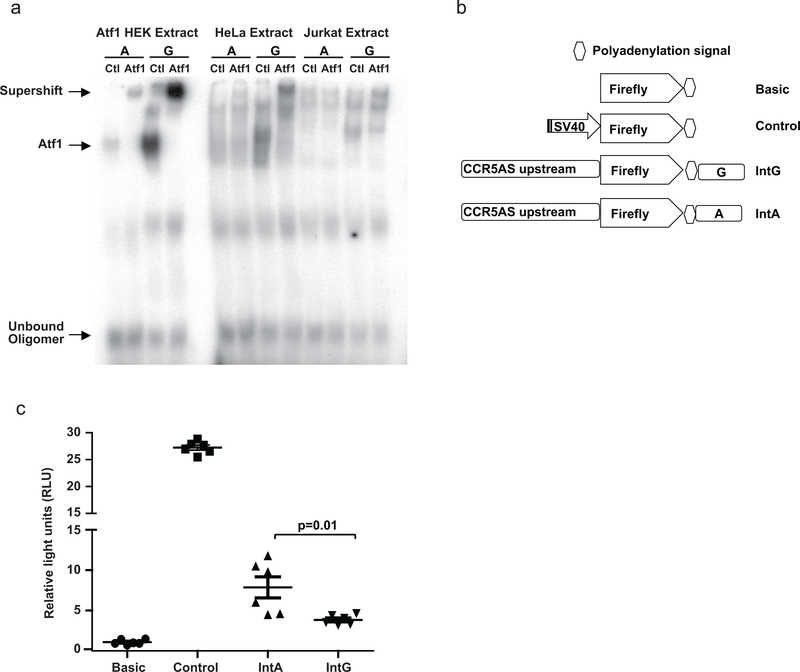Recombinant Human ATF1
| Cat.No. : | ATF1-27042TH |
| Product Overview : | Recombinant fusion protein, full length human ATF1 expressed by baculovirus in Sf9 insect cells using a N-terminal proprietary tag. |
- Specification
- Gene Information
- Related Products
- Citation
- Download
| Species : | Human |
| Tag : | Non |
| Description : | This gene encodes an activating transcription factor, which belongs to the ATF subfamily and bZIP (basic-region leucine zipper) family. It influences cellular physiologic processes by regulating the expression of downstream target genes, which are related to growth, survival, and other cellular activities. This protein is phosphorylated at serine 63 in its kinase-inducible domain by serine/threonine kinases, cAMP-dependent protein kinase A, calmodulin-dependent protein kinase I/II, mitogen- and stress-activated protein kinase and cyclin-dependent kinase 3 (cdk-3). Its phosphorylation enhances its transactivation and transcriptional activities, and enhances cell transformation. Fusion of this gene and FUS on chromosome 16 or EWSR1 on chromosome 22 induced by translocation generates chimeric proteins in angiomatoid fibrous histiocytoma and clear cell sarcoma. This gene has a pseudogene on chromosome 6. |
| Form : | Liquid |
| Storage buffer : | Preservative: NoneConstituents: 25% Glycerol, 50mM Tris HCl, 150mM Sodium chloride, 0.25mM DTT, 0.1mM PMSF, pH 7.5 |
| Storage : | Shipped on dry ice. Upon delivery aliquot and store at -80oC. Avoid freeze / thaw cycles. |
| Sequence Similarities : | Belongs to the bZIP family. ATF subfamily.Contains 1 bZIP domain.Contains 1 KID (kinase-inducible) domain. |
| Full Length : | Full L. |
| Gene Name | ATF1 activating transcription factor 1 [ Homo sapiens ] |
| Official Symbol | ATF1 |
| Synonyms | ATF1; activating transcription factor 1; cyclic AMP-dependent transcription factor ATF-1; TREB36; |
| Gene ID | 466 |
| mRNA Refseq | NM_005171 |
| Protein Refseq | NP_005162 |
| MIM | 123803 |
| Uniprot ID | P18846 |
| Chromosome Location | 12q13 |
| Pathway | Activated TLR4 signalling, organism-specific biosystem; CREB phosphorylation, organism-specific biosystem; EGFR1 Signaling Pathway, organism-specific biosystem; ErbB1 downstream signaling, organism-specific biosystem; HTLV-I infection, organism-specific biosystem; |
| Function | protein complex binding; protein heterodimerization activity; sequence-specific DNA binding; sequence-specific DNA binding transcription factor activity; sequence-specific distal enhancer binding RNA polymerase II transcription factor activity; |
| ◆ Recombinant Proteins | ||
| ATF1-9960H | Recombinant Human ATF1, GST-tagged | +Inquiry |
| ATF1-812M | Recombinant Mouse ATF1 Protein, His (Fc)-Avi-tagged | +Inquiry |
| ATF1-936H | Recombinant Human ATF1 protein, GST-tagged | +Inquiry |
| ATF1-1431H | Recombinant Human Activating Transcription Factor 1, GST-tagged | +Inquiry |
| ATF1-919H | Recombinant Human ATF1 Protein, His-tagged | +Inquiry |
| ◆ Cell & Tissue Lysates | ||
| ATF1-8632HCL | Recombinant Human ATF1 293 Cell Lysate | +Inquiry |
CCR5AS lncRNA variation differentially regulates CCR5, influencing HIV disease outcome
Journal: Nature immunology PubMed ID: 31209403 Data: 2019/4/27
Authors: Smita Kulkarni, Alexandra Lied, Mary Carrington
Article Snippet:Nuclear extracts prepared from HeLa and Jurkat cell lines via the CellLyticNuCLEAR extraction kit (Sigma-Aldrich) were stored at ?80°C until use.Nuclear extracts prepared from HeLa and Jurkat cell lines via the CellLyticNuCLEAR extraction kit (Sigma-Aldrich) were stored at ?80°C until use.. Lysate from HEK 293 transfected with recombinant human Atf1 (Creative BioMart) was used as a positive control.. Double-stranded DNA oligonucleotide probes incorporating the predicted ATF-1 binding sequence (Fwd: 5’- GTGAAAGCTTG TTAC G TA GGTAACCTTTTGT-3’; Rev: 5’- GGACAAAAGGTTACC TA C GTAA CAAGCTTT-3’) or the mutant sequence (Fwd: 5’- GTGAAAGCTTG TTAC A TA GGTAACCTTTTGT-3’; Rev: 5’- GGACAAAAGGTTACC TA T GTAA CAAGCTTT-3’) were synthesized and labelled using Klenow fragment of DNA polymerase I (Invitrogen) with [α? 32 P]deoxycytidine triphosphate (3000 Ci/mmol; PerkinElmer Life and Analytical Sciences).Double-stranded DNA oligonucleotide probes incorporating the predicted ATF-1 binding sequence (Fwd: 5’- GTGAAAGCTTG TTAC G TA GGTAACCTTTTGT-3’; Rev: 5’- GGACAAAAGGTTACC TA C GTAA CAAGCTTT-3’) or the mutant sequence (Fwd: 5’- GTGAAAGCTTG TTAC A TA GGTAACCTTTTGT-3’; Rev: 5’- GGACAAAAGGTTACC TA T GTAA CAAGCTTT-3’) were synthesized and labelled using Klenow fragment of DNA polymerase I (Invitrogen) with [α? 32 P]deoxycytidine triphosphate..

a , An electrophoretic mobility shift assay (EMSA) was performed with 32 P-labelled oligonucleotides containing the core binding sequence for
Not For Human Consumption!
Inquiry
- Reviews (0)
- Q&As (0)
Ask a Question for All ATF1 Products
Required fields are marked with *
My Review for All ATF1 Products
Required fields are marked with *



